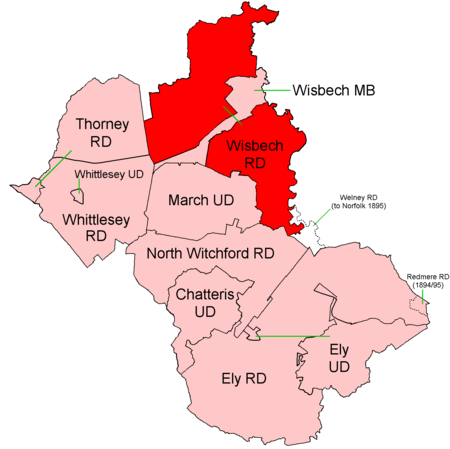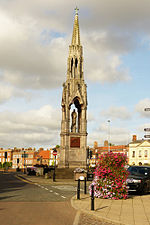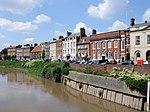Wisbech Rural District

Wisbech was a rural district in Cambridgeshire in England from 1894 to 1974. It was formed from that part of the Wisbech rural sanitary district which was in Isle of Ely, Cambridgeshire, by the Local Government Act 1894. It covered the parishes of Elm, Leverington, Outwell, Parson Drove, Tydd St Giles, Upwell and Wisbech St Mary. The offices were in Alexandra Road, Wisbech.When first created, the district consisted of two detached parts separated by the long, narrow tail of Wisbech Municipal Borough. In 1933 the south-western part of Wisbech MB was transferred to the parish of Elm, leaving Wisbech RD surrounding the town on three sides.It formed part of the administrative county of Isle of Ely from its creation until 1965, when this merged to form part of Cambridgeshire and Isle of Ely. In 1974 the district was abolished under the Local Government Act 1972. It became part of the Fenland district.
Excerpt from the Wikipedia article Wisbech Rural District (License: CC BY-SA 3.0, Authors, Images).Wisbech Rural District
Nene Quay, Fenland District
Geographical coordinates (GPS) Address Nearby Places Show on map
Geographical coordinates (GPS)
| Latitude | Longitude |
|---|---|
| N 52.666 ° | E 0.159 ° |
Address
Nene Quay
Nene Quay
PE13 1AQ Fenland District
England, United Kingdom
Open on Google Maps









